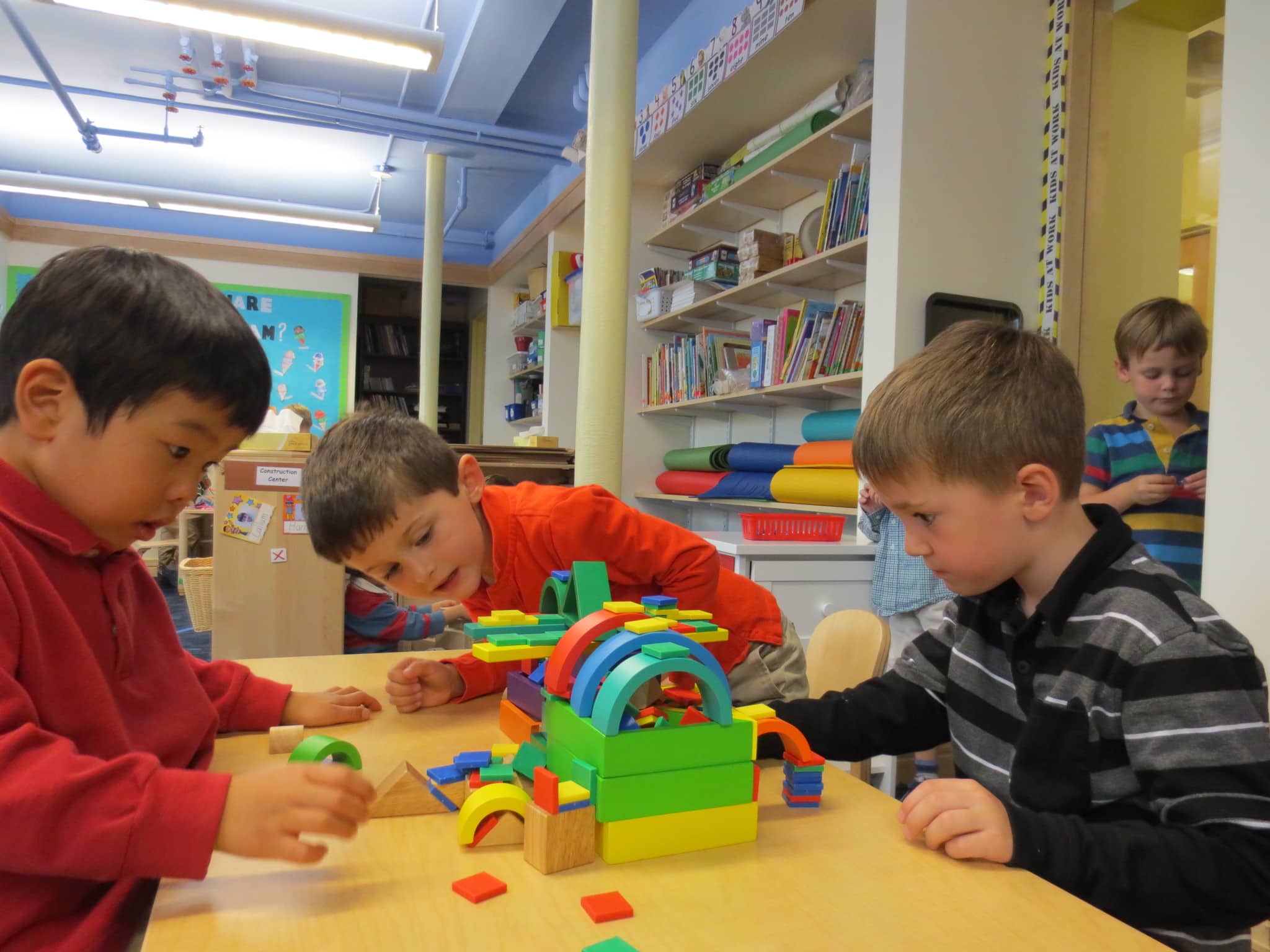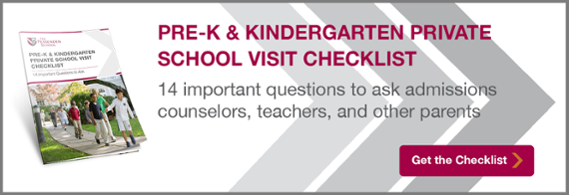In Massachusetts, children must begin school in September of the calendar year in which they turn 6. But most elementary schools — public and private — allow students to start earlier than that.
For example, Newton Public Schools allow children to begin kindergarten if they have turned 5 by Aug. 31. At The Fessenden School, we give them an extra day to turn 5, until Sept. 1. That leaves a significant window for children who could enter kindergarten at either age 5 or 6.
If your child was born inside this window, how will you know when he or she is ready to start kindergarten? How does this affect your kindergarten search? When is it best to have him or her spend a year in a high-quality pre-kindergarten program before entering kindergarten?
 We spoke with Carol Kinlan, a Boston-based educational consultant, who has helped many families find the right kindergarten program for their children’s learning needs. Carol shared the seven signs that indicate a 5-year-old is ready for the challenge of kindergarten.
We spoke with Carol Kinlan, a Boston-based educational consultant, who has helped many families find the right kindergarten program for their children’s learning needs. Carol shared the seven signs that indicate a 5-year-old is ready for the challenge of kindergarten.
Sign 1: Your child can sit still and focus.
“For a child to learn, they have to be able to focus and pay attention to the teacher or to an activity,”” Carol says. “Self-regulation is important. If a child needs to be constantly in motion, he or she may not be ready for kindergarten.”

Sign 2: When you speak to your child, he or she understands what you’re saying.
“Without using long, complex sentences,” Carol says, “does your child appear to understand what you’re saying most of the time?” If your child seems confused by stories or your instructions, it might be a sign that he or she is having trouble processing language. This can make it hard for a child to focus on what is being said in school. She adds, “You want them to be alert and able to comprehend when you’re talking to them.”
Sign 3: Your child has sound syntax.
“It is OK if they occasionally say ‘dat’ instead of ‘that,’ but if they’re having a great deal of trouble expressing themselves it can make communication with teachers and peers frustrating. This doesn’t mean the child might not be ready for kindergarten. However, the child may struggle more when speaking with others. A good speech and language evaluation can help determine if the child is having trouble with how he or she is receiving what they hear or expressing what they want to say.”
Sign 4: Your child can use a pencil and scissors.
Your child’s fine motor skills will be challenged throughout the kindergarten curriculum, so it’s important he or she is comfortable with common, age-appropriate writing, drawing, and crafting tools.
Sign 5: Your child has moved on from parallel play.
Parallel play, when children play alongside each other but not with each other, is an important stage in a child’s development, but by the start of kindergarten, children should be able to engage with their peers in a friendly cooperate manner,” Carol explains..

“If you feel that they’re just standing alone when with others, or having a great deal of trouble separating, or if they seem highly anxious, that may mean they need to repeat a year and may need more time to feel comfortable with groups of children and being away from you,” she says.
Carol suggests having your child play with three or four other children in the fall of the year you start searching for a kindergarten program, if not before, so they get used to being with children their own age.
Sign 6: Your child is able to transition away from you calmly.
“It’s not uncommon for young children to feel anxious on their first day of school. They might hold on to their mom or dad for a little while,” Carol says. “But if they’re screaming, getting angry, or highly anxious, they might need a little more time.” Sometimes, a school will allow a parent to stay in the class until a child feels comfortable having him or her leave. It might be worth asking what the policy is. Some schools encourage a “quick departure” on the first days of school, while others are more relaxed.
Sign 7: Your child can identify letters, numbers, and common objects quickly.
One of Carol’s previous jobs was administering testing to children who were applying for admission into private kindergarten programs. As part of that process, Carol would show the applicant pictures of common objects like a squirrel, a pencil, or a house and ask the child to identify them
“You’re listening to how rapidly and accurately the child can recall the image,” she says.
Then, Carol says, she would ask them to do the same with letters and the numbers one through 10.

“What we’d be looking at in kindergarten testing are early phonemic skills. For example does the child have some sense that ‘cah’ is for C, ‘ah’ for A, t’uh’ for T,” she says. Some schools also look at rapid naming (a method that measures how quickly a child can say the name of an object, color, or symbol aloud). Carol says, “Children who might have a trouble with their early reading skills frequently display an inability to recall small phonemes (e.g., ‘Cah’ for C) or they might have noticeable trouble rapidly recalling known numbers, colors, letters and objects.” This does not mean the child wouldn’t be ready, socially, for a kindergarten program, but it might be harder for him or her feel successful at a private schools where a child’s early reading skills need to be more intact.
When do you think a child is ready for kindergarten?
Preparing for Kindergarten and Pre-K
Whether you’re interested in starting your son in pre-k or kindergarten, as you visit schools, take along a copy of this Pre-K & Kindergarten Private School Visit Checklist. It gives you the 14 most important questions to ask to make the most of your precious few hours at each school.
Learn More About Fessenden All Boys Kindergarten and Pre-K
Fessenden Junior Boarding School is dedicated to providing a well-rounded education and successful start to Pre-K! Read more about our private Kindergarten in New England at our blog, plan a visit, or learn how to apply today!
Read On

4 Skills That Will Help Your Son Do Well in Kindergarten

Preparing for Kindergarten: Everyday Opportunities Your Child Has at Home


